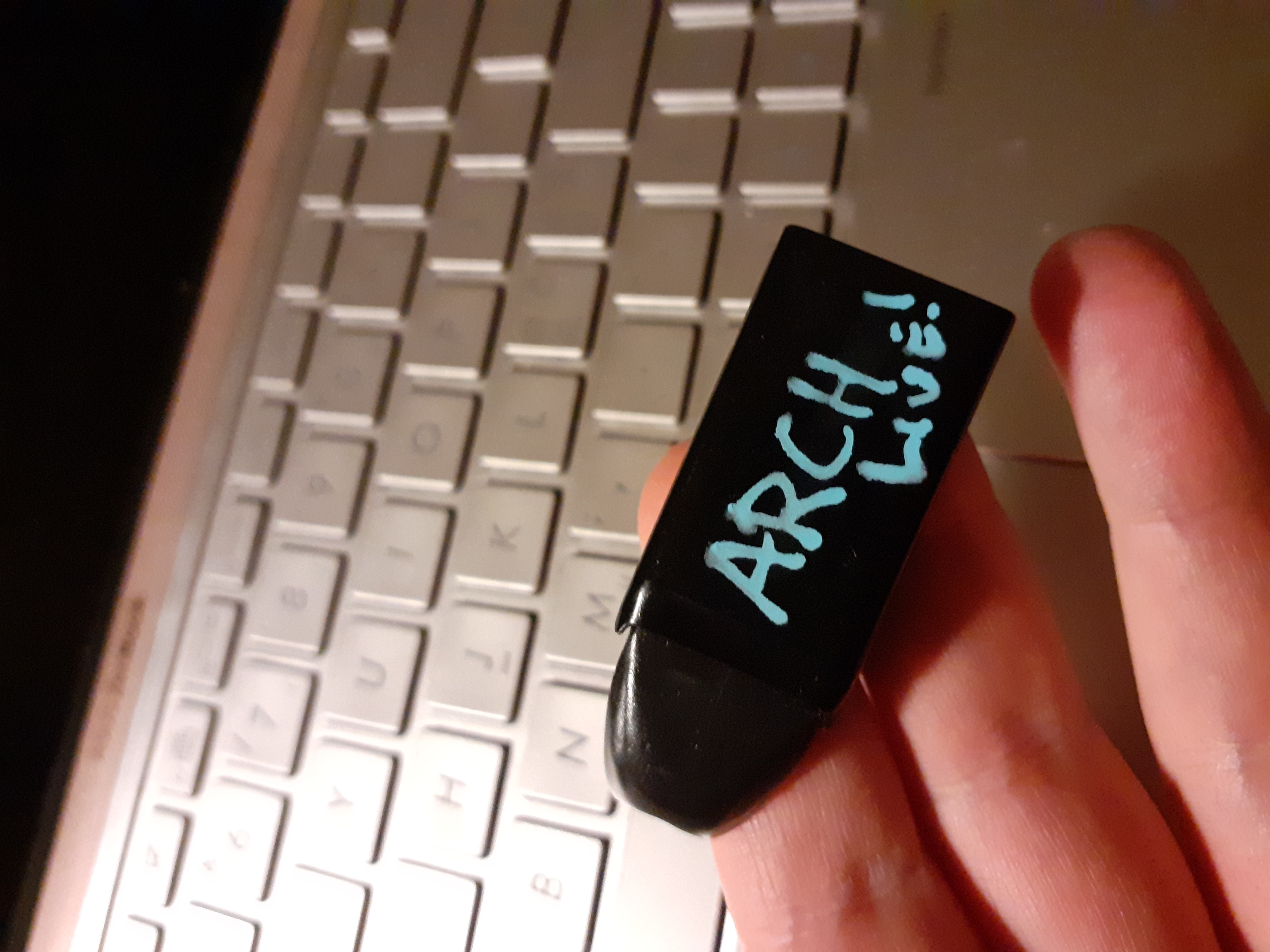October 10, 2020

Inspired by this blog post, I have been toying with a silly idea lately: A completely portable Arch Linux distribution set up properly for computer music, but flashed onto a USB thumb drive so that I may pop it into any computer, boot from the thumb drive and start creating music on whatever hardware is in front of me.
I have achieved this now using the awesome alma project. Alma is a tool for creating persistent USB installations of Arch Linux using a series of configuration files and bash scripts called presets. See my alma presets here.
The LiveUSB environment runs exactly like a native installation on your hard drive and it comes with yay installed, making it super easy to install new software from the aur.
The goal with this is to have a solid base for people to flash onto their drives and then let them install their own dotfiles and additional software as needed.
Features
My alma preset installs a fully usable and persistent Arch Linux system on a LiveUSB.
It is targeted at users of tiling window managers and is set up with two of the most popular choices for these.
Further, the preset contains a range of software preconfigured for computer music production and audio work including:
- NeoVim
- SuperCollider (with sc3-plugins) (with scnvim)
- Csound
- tidal (with tidalvim)
- Pure Data
- Reaper (not including in the .img file below for licensing reasons but easily installed using
yay -S reaper-bin) - Sox
- Flucoma
- Both the Sway and i3 tiling window managers (for Wayland and X, selectable on login)
- Jack (with both the GUI jack manager
qjackctland the terminal basednjconnectpatcher) - Realtime kernel (and added realtime priviliges for your user)
Usage
There are two ways of installing and using this.
The easy way: Flash my preconfigured image onto your drive
Using something like balena etcher or dd you can flash a .img file to a drive.
I have made a preconfigured image file that you can download for that purpose.
The image comes with a default user:
User: computer
Password: music
Flash it on to your drive, choose the drive as the boot device in your BIOS and start making noise.
Download the preconfigured image here (the deflated image file is 10GB so should fit on anything larger than that).
The hard way
The full alma preset is available here including instructions for creating an image file.
See the alma project for information about installing it.
Logging in for the first time
At the login screen, in the top right corner you may choose between i3 (X) and sway (Wayland) as your window manager.
After choosing your window manager, type your credentials and log in.
On first boot, open a terminal and run topgrade to upgrade everything on the system to latest version.
When running tidal the first time
Before running tidal cycles, open up a .scd file and run Quarks.install("SuperDirt") to get SuperDirt installed. The rest of the setup should work out of the box.